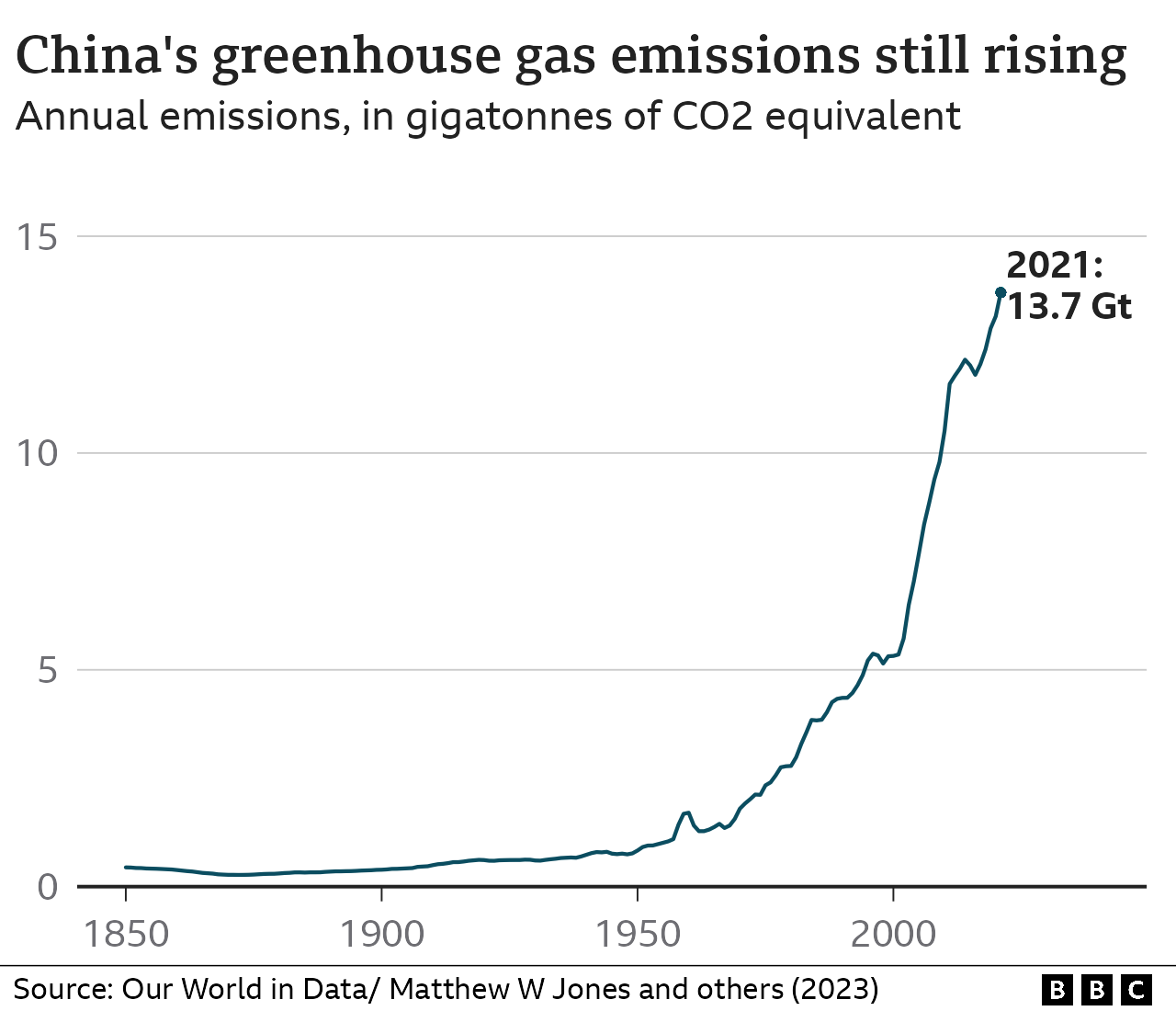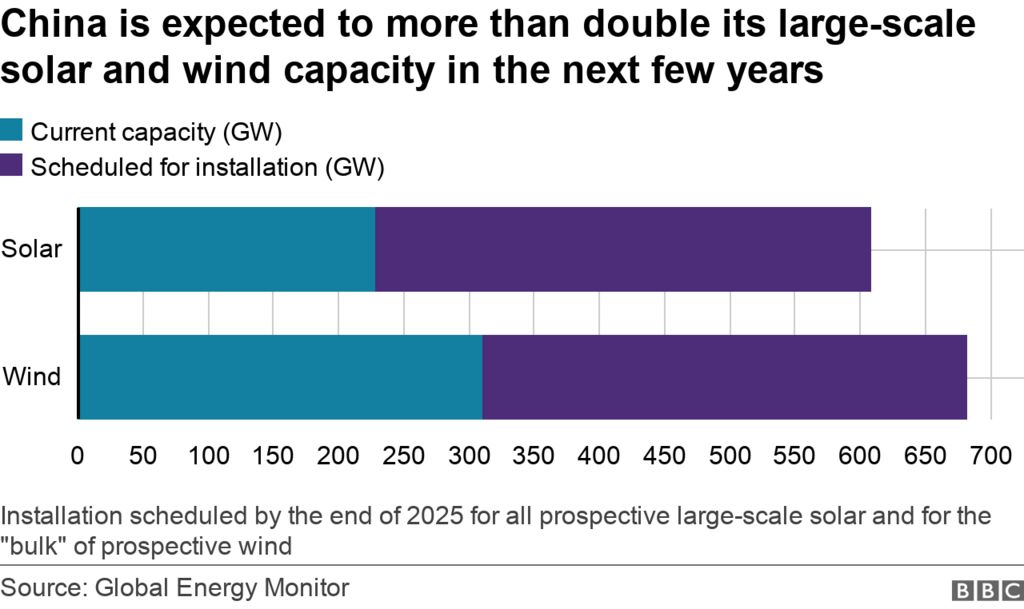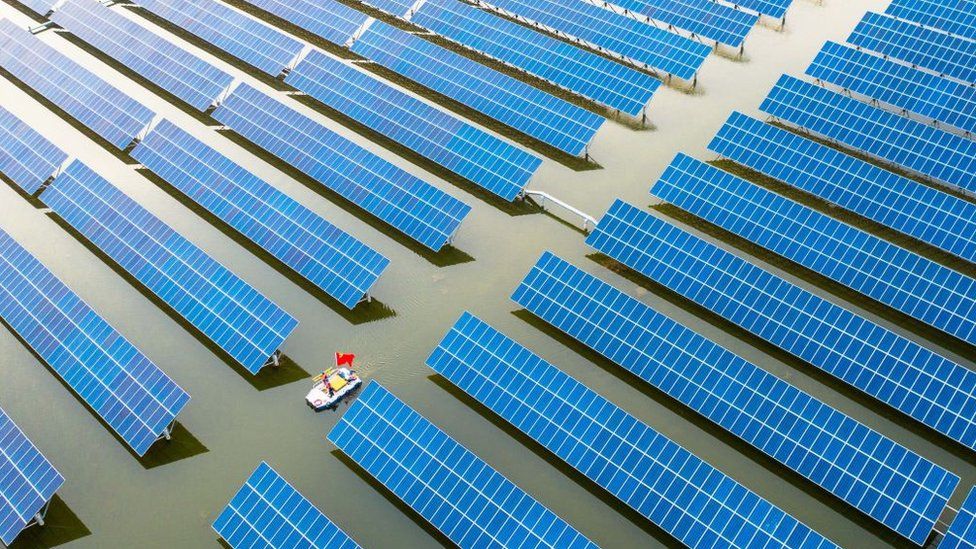A recent study found that the growth of wind and solar energy in China may contribute to a much faster reduction in global carbon emissions than previously thought.
By 2025, the rate of growth in solar panel installations alone would have increased the world's capacity by 85%.
According to the report, the nation is on track to surpass its 2030 green energy targets five years early.
However, the authors note that the number of coal plants is also rising, in part as a safety net for all the brand-new wind and solar farms.
The world's efforts to reduce carbon emissions, the primary cause of climate change, are frequently viewed as hinged on China.
The nation is the world's largest consumer of coal, primarily for the production of electricity. Approximately 69 percent of China's carbon dioxide emissions are attributable to the use of coal.

The results of this new study, however, indicate that China is rapidly increasing its ability to produce electricity from wind and solar sources, which could significantly reduce the effects of global warming.
The study was conducted by Global Energy Monitor (GEM), a non-profit research organization whose findings are frequently cited by the World Bank, the International Energy Agency, and governments.
The report examines China's installed green energy capacity and makes predictions for what has been announced and is currently being built over the next two years.
It reveals that more solar panels are currently installed in large-scale projects in China than in the entire rest of the world. Since 2017, the nation's capacity for wind energy has doubled.
This, however, seems to be just the beginning. According to GEM, China is rapidly developing this industry and will have more than doubled its wind and solar capacity by the end of 2025.
In comparison to current levels, China would increase the global fleet of wind turbines by 50% and the number of large-scale solar installations by 85%.
Plans that date back more than 20 years culminated in the current surge. .
China has risen to prominence as the world's top producer of solar panels during that time, bringing down prices throughout the entire supply chain. This has improved the economic viability of solar and wind installations in China. .
Subsidies and laws requiring each province to meet green energy targets have both contributed.
China was responsible for 55% of the more than half a trillion dollars spent globally on wind and solar power in 2017.

President Xi Jinping declared in 2020 that China would install more than 1,200 gigawatts of solar and wind energy by 2030. This new report predicts that this goal will be met five years earlier than expected.
One of the report's authors, Martin Weil, said, "We believe that the surge in building renewables certainly provides a basis for peaking [China's] carbon emissions earlier than 2030.".
While this may be good news for reducing global warming, China's coal use continues to be a significant obstacle.
China built two new coal-fired power plants every week in 2022, often as a backup source of energy and to ensure the continuity of the energy supply. Many of these plants were built on new solar and wind parks.
How these coal plants will actually be deployed in the future is the key concern, according to Mr. Weil.
"One hopes they're deployed in a way that makes the renewable energy to coal ratio as high as possible. ".
A successful China-wide transition away from coal will depend on the development of battery storage and the expansion of hydrogen, two additional key indicators.







